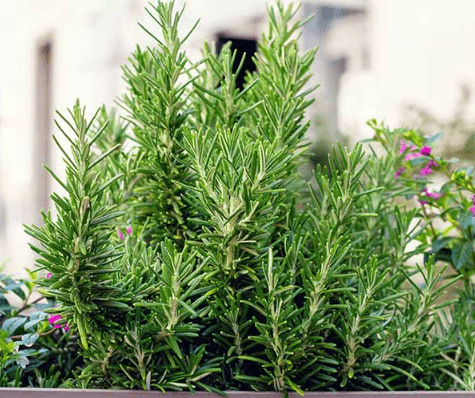
Description
The aromatic herb rosemary (Salvia rosmarinus) grows into a rounded, evergreen shrub that is perennial. It has gray-green, needle-like leaves that are slender and upright on woody stalks. Although it can bloom at other times of the year, clusters of tiny, light blue to white blooms usually occur in late spring or early summer. After there is no longer a chance of frost, plant rosemary in the spring. Additionally, rosemary can be grown inside.
Habitat
Native to the Mediterranean region, rosemary is grown in California in the United States and Europe. In addition, Algeria, China, Morocco, the Middle East, Russia, Romania, Serbia, Tunisia, Turkey, and to a lesser degree India grow it. Growing rosemary is best done in a temperate climate.
Uses
In traditional medicine, rosemary has been used to treat a variety of illnesses, such as headaches, dysmenorrhea, stomachaches, epilepsy, rheumatic pain, spasms, nervous agitation, memory enhancement, depression, hysteria, and physical and mental exhaustion.

Varieties
There are various varieties of rosemary that can be grown, such as:
‘Arp’: Known for its ability to withstand frigid temperatures, this plant features light green foliage and a lemony aroma.
“Golden Rain“: This plant has yellow markings on its foliage and grows to be 2 to 3 feet tall and wide.
‘Albus’: This cultivar is distinguished by its white blossoms.
“Prostratus“: This cultivar grows to a height of about 2 feet and a width of 2 to 3 feet, with a low, spreading growth habit.
Plant Care
- Light
Rosemary avoids shadows and thrives in direct sunlight. This indicates that on most days, it needs at least six hours of direct sunlight. For indoor development, a south-facing window is optimal, although grow lights are frequently required to offer extra light. When the weather is warm, move indoor plants outside to get some fresh air and sunlight. Weak and lanky development can result from inadequate light.
- Soil
For rosemary, a well-draining sandy or loamy soil is ideal. Wet soils and heavy clay are not conducive to its growth. A soil pH of 6.0 to 7.0 is good, or slightly acidic to neutral.
- Water
Once established, rosemary plants can withstand droughts pretty well, therefore it’s preferable to water them sparingly rather than excessively. In order to keep the soil evenly moist but not drenched, let the top few inches of soil dry off between waterings.
- Humidity and Temperature
This shrub prefers warm temperatures and a moderate amount of humidity. The majority of rosemary cultivars tolerate heat well, however they cannot withstand temperatures below thirty degrees. Their ideal temperature range is 55 to 80 degrees. Furthermore, excessive humidity can cause rot and fungal problems, particularly if the plant doesn’t get enough air circulation.
- Fertilizer
It’s not a heavy feeder, rosemary. A healthy start for the shrub can be achieved by incorporating compost into the soil upon planting. Then, to encourage high-quality growth, apply balanced liquid fertilizers according to the instructions on the label.
Table





